What’s a cultivar?
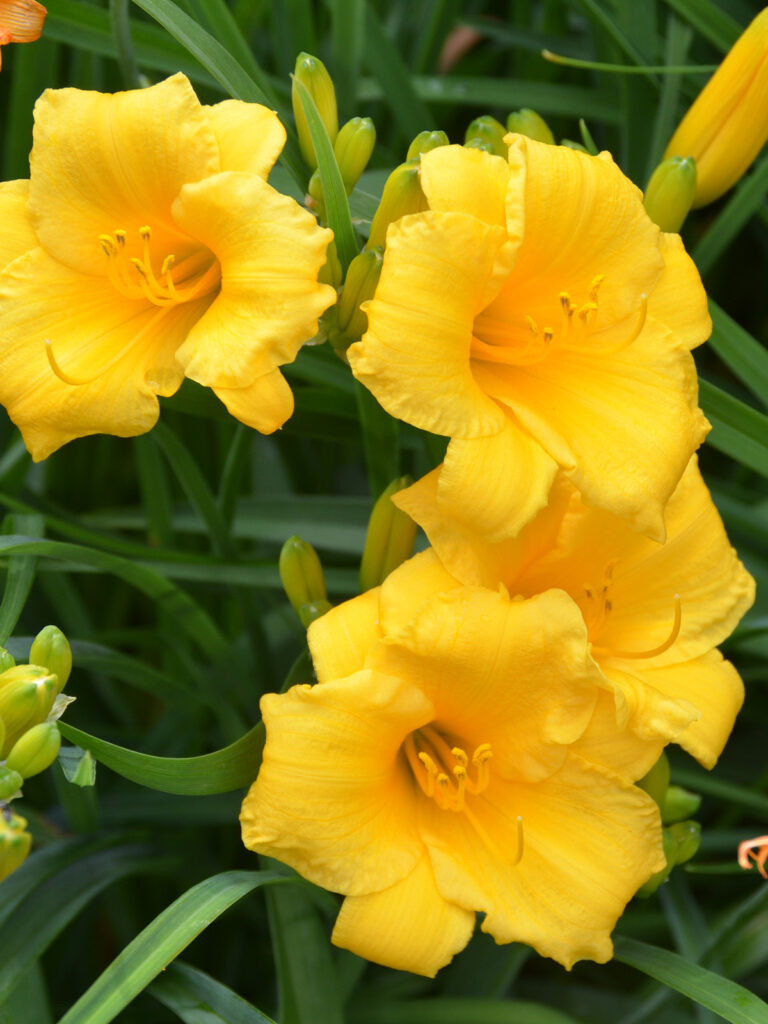
Back in my ornamental gardening days, I wanted the latest, greatest, most elaborate flowers I could find, so I followed the advice of so many garden books: Choose cultivars – in other words, those (generally more expensive) “named varieties,” such as this variety of an expensive daylily cultivar.
Now, as a habitat gardener, I avoid them.
According to William Cullina, “A cultivar is a clone or seed strain selected for a particular trait or traits.”
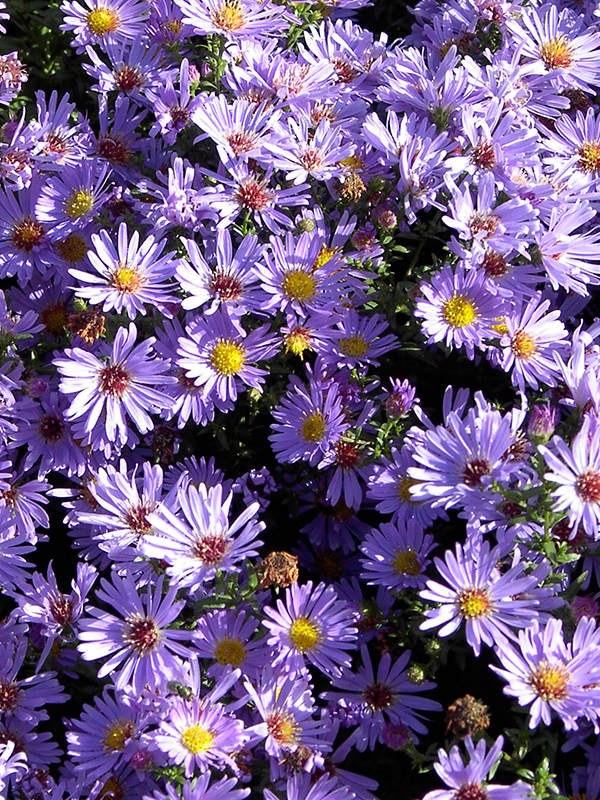
The plant’s name will be written with single quote marks and will not be italicized. For example, this aster is a cultivar of New England aster.
Its scientific name is Symphyotrichum novae-angliae and its cultivar name is ‘Purple Dome.’ So the plant label would read: Symphyotrichum novae-angliae ‘Purple Dome’.
By choosing cultivars, gardeners know exactly what they’re getting, without the variation possible in the plain species. Many articles, garden books, and nurseries sing their praises. Cultivars let gardeners design their gardens for that “wow” factor, much like an interior designer decorates their living rooms.
BUT my living room is not a living thing. My landscape is.
Another reason cultivars are promoted may have nothing to do with their garden-worthiness: they’re simply more profitable for the company that introduces them. They’re patented so they can charge more for them, even if they’re not very different from the species.
And now nativars
Now that the horticultural industry is noticing the increased interest in native plants, they’re producing cultivars of natives, sometimes referred to as “nativars.” Don’t be fooled! A “nativar” is a just a cultivar — a cultivar of a native, it’s true, but still just a cultivar.

Which bloodroot will appeal more to humans? Which to bees looking for some early nectar and pollen?
The single-petaled flowers on the left are the straight species; the ones on the right are the double-flowered cultivar “Multiplex.”
For a while I was growing more of the cultivars, but now I’m composting them.
Why I avoid nativars
1) Habitat properties aren’t always there
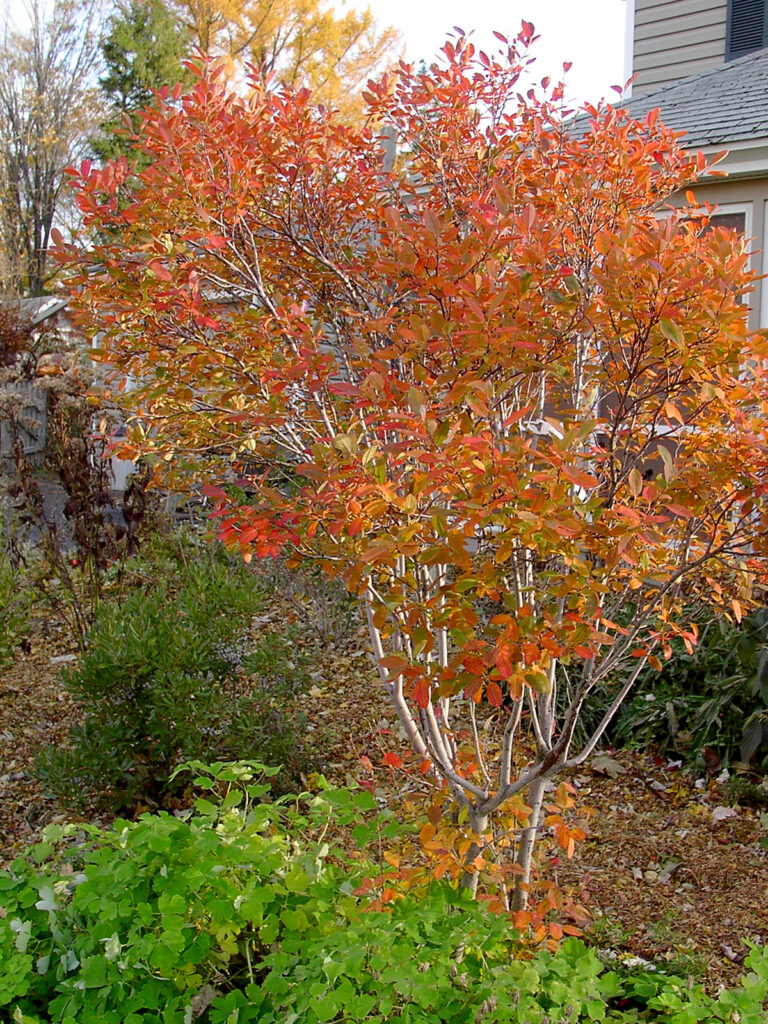
I changed my ideas about cultivars when we bought a cultivar of a native serviceberry, Amelanchier canadensis ‘Glennform.’ At the time (the early 2000s), there weren’t many native shrubs available and that relatively expensive shrub was all I could find.
We waited and waited, but strangely, it produced very few berries. And of course, berries is what we bought this plant for (especially since at that time I didn’t realize that native plants were necessary to support insects as bird food)!
Many years later, I found this description of this cultivar from the Missouri Botanical Garden: “It was chosen for its dense, upright and symmetrical growth habit. … but less than 10% of the flowers produce mature fruit.” Amazingly, it goes on to say that it’s “Best in woodland, naturalized or native plant gardens, especially with dark or shaded backdrops which tend to highlight the form, flowers and fall color of the plant.”
Hmmm, so it produces few berries, but it’s suitable for a native plant garden?!?
We’ve since cut it down and planted the plain species instead. Unlike the cultivar, the straight species is loaded with berries!
This plant inspired my article for the Wild Ones Journal on nativars!
Insects are not people (and neither are hummingbirds)!
Insects see things differently. Though we can’t know exactly what insects see since we can’t see through their eyes or with their brains, some photographers have simulated what insects may see, given they perceive different wavelengths of light.
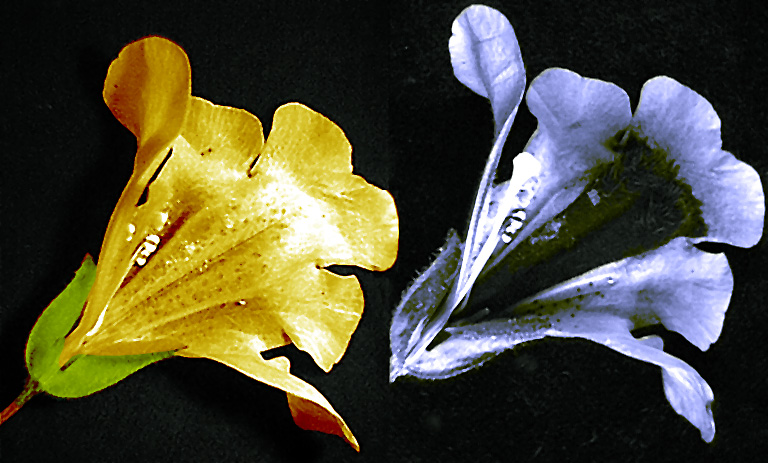
This photo [by Plantsurfer on Wikimedia Commons] compares what humans see (on the left) and what insects see (on the right).
Insects see nectar guides. Who knows if these appear on cultivars?
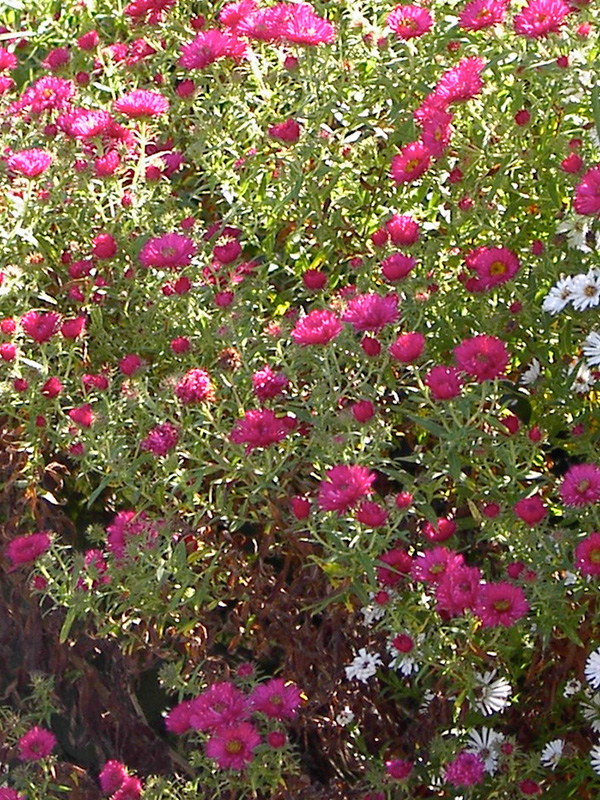
Here’s another cultivar of New England aster — i.e. a “nativar”.
Yes, it’s “pretty,” but when I observed it, I noticed that bees were busy at all the surrounding plain New England aster plants, but weren’t at all interested in this garden ornament.
Another case of “decorating” our land rather than making it part of the ecosystem. What a loss for bees!
Now if we want shorter asters, we simply prune back the tall species asters in June. We’re experimenting with how drastically we can prune and still have them flourish.
Basically, if a particular species is too big for our property, the best alternative is to find a different plant that does fit. Lots of smaller native plants exist! And for those I still want to have, I’ve been experimenting with what I call “radical pruning” about mid-June and I’m finding that they still will flower even at their more manageable size. And, of course, their leaves will still be able to host insects.
Hummingbirds
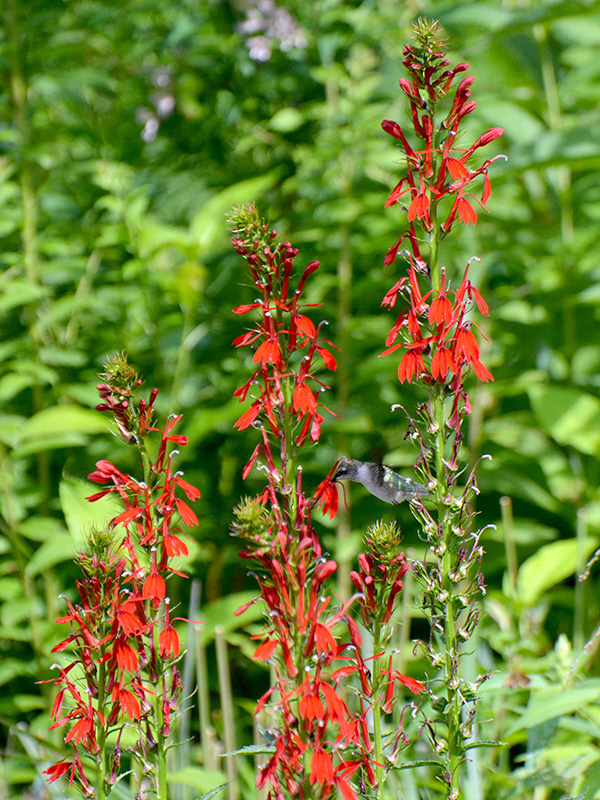
As the Humane Gardener article (in Resources below) notes, cardinal lobelia cultivars may not provide as much nectar as the straight species.
This flower is a hummingbird favorite, but the cultivar may require many more trips to get the same amount of nectar as the species. Not good for the hummer!
2) They limit genetic diversity
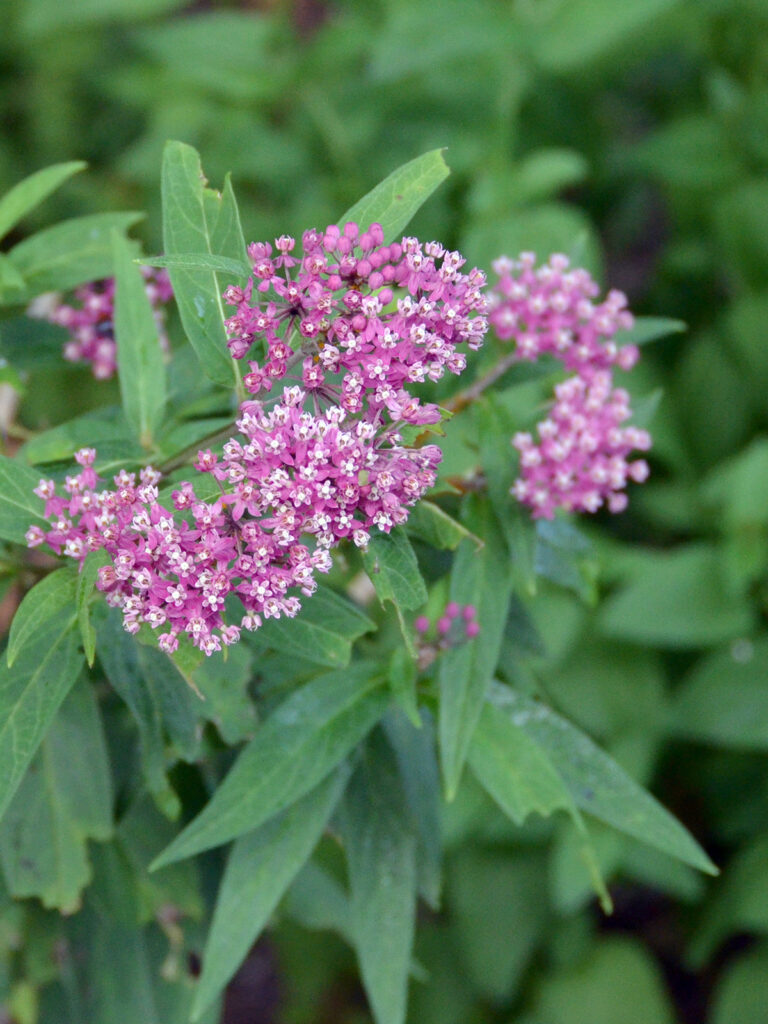
This is a big one.
Plants native to a particular region over the centuries and millennia may evolve slightly differently so they’re optimal for a particular region.
In other words, plants of the same species from one area aren’t exactly the same as plants from another area.
For example, an Asclepias incarnata (swamp milkweed) from New York may look the same as an Asclepias incarnata from North Carolina, but they’re not likely to be genetically identical.
We’re thrilled that local native plant nurseries are increasingly offering more local ecotype plants. This is especially important for milkweeds as monarch conservation organizations want to restore the healthiest population of milkweeds for monarchs in each ecoregion. (Our local HGCNY Wild Ones chapter has distributed thousands of local ecotype milkweeds in Central New York!)
When a nativar is first selected by the horticultural industry, who knows where that particular genotype came from? It’s possible that that particular genotype will meet the needs of insects and other wildlife, but it’s likely it won’t be acceptable to all (and some research is finding this is the case).
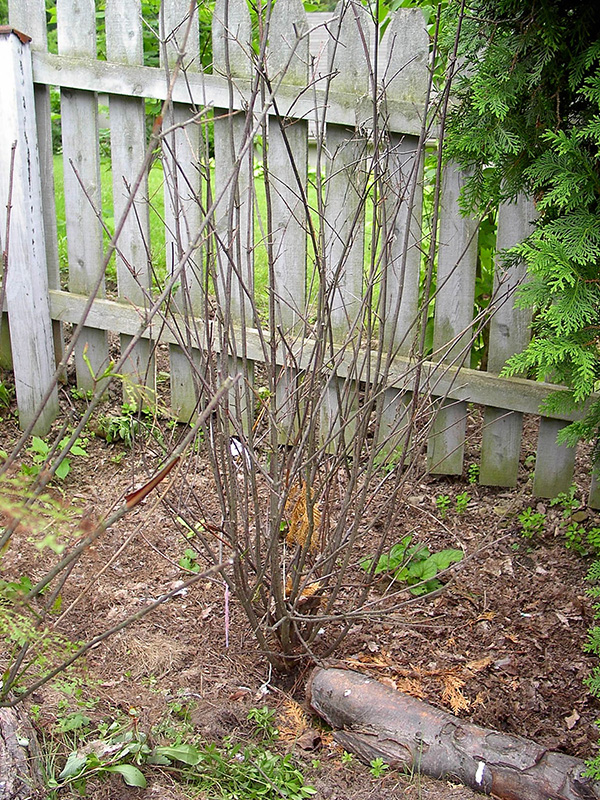
Also, diseases or pests appear (often due to importing non-native plants) that wipe out whole populations of particular species. Think about chestnut blight, Dutch elm disease, and spongy moths (formerly known as “gypsy moth”) and the more recent hemlock wooly adelgid, emerald ash borer, and viburnum leaf beetle (which killed this arrowwood viburnum) among many others.
When every plant of a particular species is the same genetically, we lose the opportunity to have individual plants with unique variations that might survive these new challenges.
An interesting point
Tallamy makes an interesting point: Even though a species may be susceptible to an invasive pest or disease, this is NOT a reason to avoid planting it! The more genetic variation we have, the more likely there will be a plant that can survive whatever the challenge is. So… I guess we should try planting another arrowwood viburnum! [See more of Tallamy’s ideas in the Reflections section below.]
Climate change is a huge challenge that cries out for genetic diversity. Our future depends on having some plants that could survive in a changed and changing environment.
All in all, we’d prefer to take our chances on choosing plants that perhaps are less than ornamentally “perfect” and not totally predictable in size or shape, but which maintain genetic diversity for the future.
But a few times we chose cultivars
Many years ago, we bought cultivars of hollies such as winterberry or inkberry so we would know which one was male and which was female — and because there were few straight species available.
BUT NOW a better alternative (if we could find the species available) would be to buy more seedling plants of the same species and see how many males and females we would end up with. For the difference in cost, we could just cut down the extra males when it becomes obvious which are males.
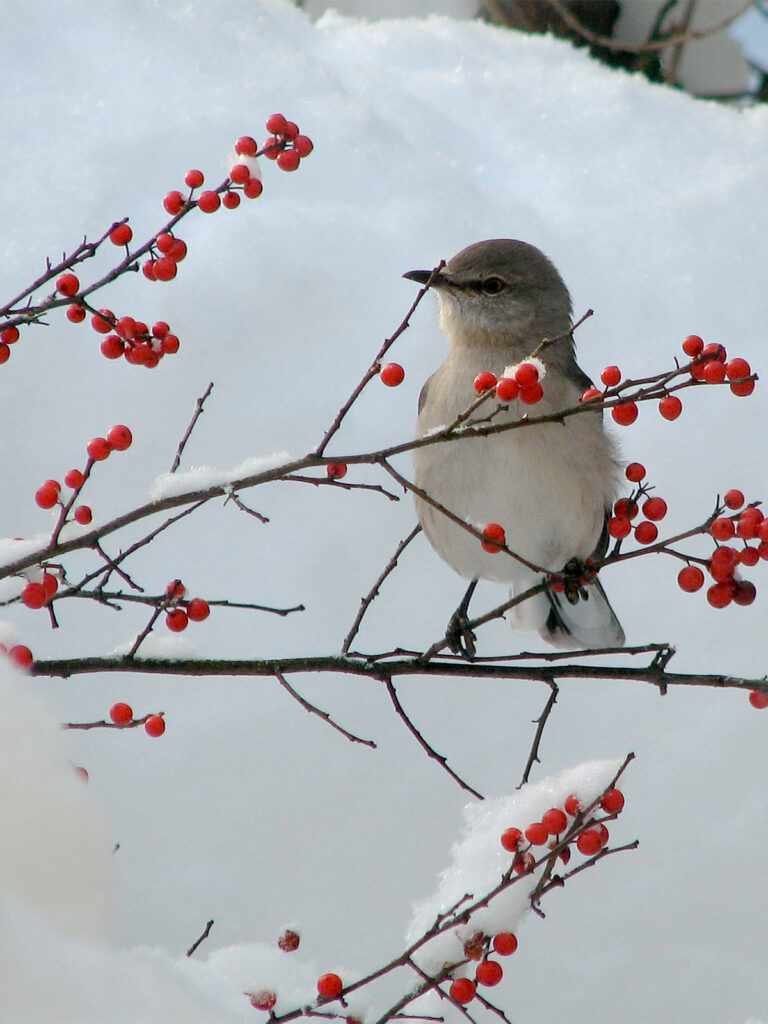
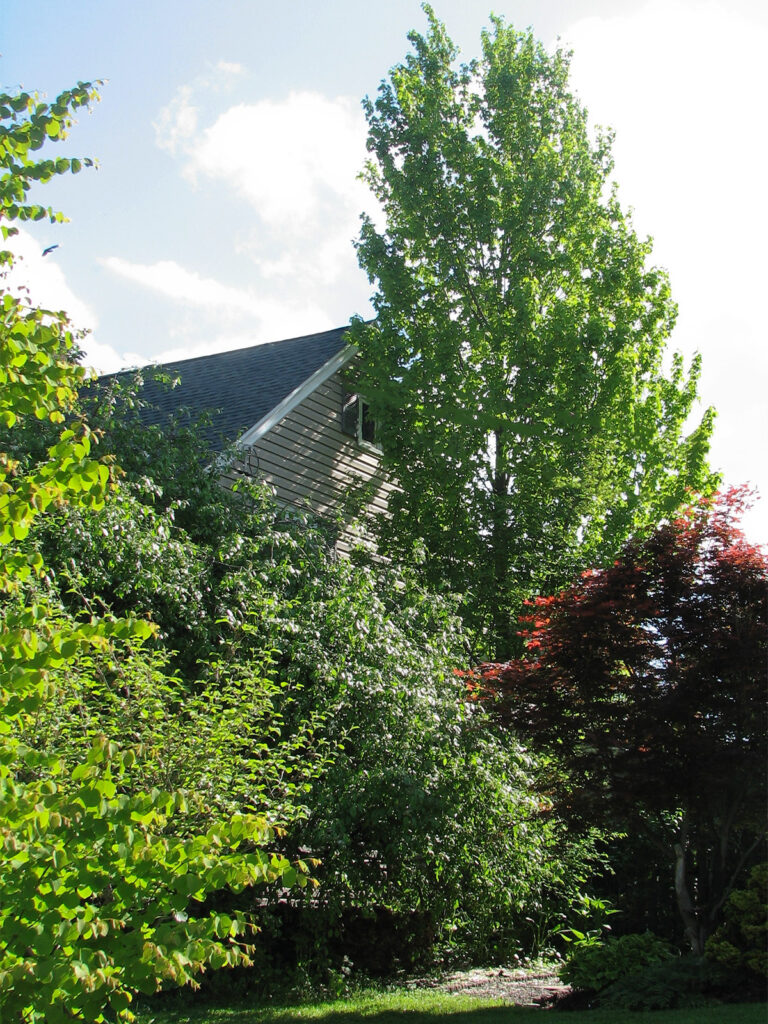
We also used a nativar when we chose a tree to plant between our house and our neighbor’s. This is an ‘Armstrong’ red maple cultivar.
There simply would not have been enough room to plant the straight species.
This tree helps us save energy since it shades the house and A/C in the summer and, being deciduous, lets the sun in in the winter.
What’s a hybrid?
A hybrid plant is created by crossing two species, which results in some characteristics of each parent and perhaps resulting in quite a different creation.
Man-made hybrids are written with the genus name, then “x”, then its given name enclosed with single quotes.
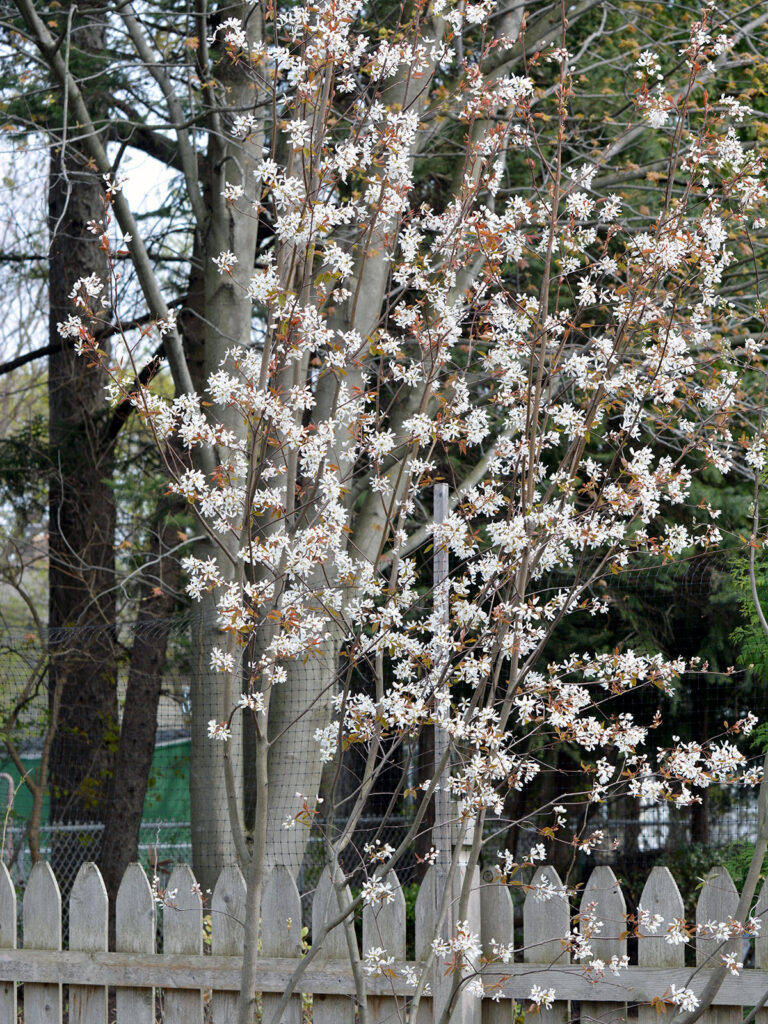
And it’s interesting that hybrids can occur naturally, as is the case with my apple serviceberry.
Apple serviceberry is a naturally-occurring hybrid of Allegheny serviceberry (Amelanchier laevis) and downy serviceberry (A. arborea). The resulting apple serviceberry is written as Amelanchier x grandiflora (or as Amelanchier lamarckii according to some). Except for these naturally-occurring hybrids, I don’t choose hybrids at all.
See more about scientific terminology.
The bottom line
Open-pollinated, local ecotype species are beneficial; nativars may or may not be. It seems to me that the best choice for anyone concerned about the world we’re leaving our children is to favor the straight species of native plants.
NOTE: Our local Wild Ones chapter Habitat Gardening in Central New York no longer offers cultivars at our plant sale.
Resources
- Wild Ones:
- Here’s the official Wild Ones statement on Nativars – REVISED in 2021
- Wild Ones Journal:
- Yogurt’s Lessons – My article published in the Summer 2017 issue
- Homegrown National Park:
- Choose Natives:
- Wild Seed Project:
- Grist:
- The next pandemic could strike crops, not people – pertains to agriculture, but the same issue of genetic uniformity applies to all plants
- Wildflower Center:
- A different light – excellent photos of how plants
- Uni. of Rhode Island Cooperative Extension:
- The Humane Gardener:
- A rose by any other name
- Flower Power: A Q&A with Annie White – Fascinating discussion of how cultivars and species differ in many cases … with sometimes dramatic consequences for wildlife!
- Ecological Landscape Alliance:
- Perfect Earth Project:
- SeedSavers.org – definition of “open pollinated”:
- “Open-pollination is when pollination occurs by insect, bird, wind, humans, or other natural mechanisms. Because there are no restrictions on the flow of pollen between individuals, open-pollinated plants are more genetically diverse. This can cause a greater amount of variation within plant populations, which allows plants to slowly adapt to local growing conditions and climate year-to-year. As long as pollen is not shared between different varieties within the same species, then the seed produced will remain true-to-type year after year.“
Reflections
“It is a bad idea to load the landscape with cultivars that have no genetic variability… I think the safest policy right now is to encourage the use of straight species. Ask for them at your local nursery; encourage nurserymen to start stocking more straight species. The nursery industry has not embraced the message that native plants are more about ecosystem function than about looks. We have to convince them that there is a market for plants with high function.”
~ Doug Tallamy, a Wild Ones Honorary Board Member; from the Wild Ones 2021 Position Statement on Nativars (see link above to read the entire paper)
… I have two problems with cultivars in general. First, most cultivars are propagated by cloning; this means we are planting individuals with no genetic variation at all. In the age of climate change and highly variable weather, loading our landscapes with plants that do not have the evolutionary mechanism to adapt (genetic variability) makes little sense. Second, offering only cultivars for sale perpetuates the notion that plants are simply decorations and how they interact with other species is irrelevant.
~ Doug Tallamy, Nature’s Best Hope: A New Approach to Conservation, p. 226, (2020)
Merely ornamental plants merely grow. In time they grow too big, or they die; then someone takes them out and redecorates with others. Nothing else happens. There is no evolution.
~ Sara Stein
… few of our commercially available plants are grown from seed. Most are cloned, propagated asexually by cuttings or tissue culture—they have no radicle. Instead, these genetically identical plants are created to meet the needs of the horticulture industry: easy to grow (compact, fast growing, unappealing to insects), easy to ship (short and tight “muffin-tops”) and easy to sell (big, bright flowers). These cultivars are often given cutesy, easy to remember, wince-worthy names, like “Incrediball”, “Pinky Winky”, and “Miss Piggy”. Many are patented, with the “inventor” getting a royalty for every plant sold.
~ Amy Von Gal, Perfect Earth Project
A 2017 study by the Mt. Cuba Center in Delaware revealed that 25 percent of the plants in wholesale nurseries in the mid-Atlantic region are natives; of that portion, only 25 percent are the straight species of natives (George Coombs, Denise Gilchrist). … When we consider that many landscape designers, landscape architects, and landscape construction companies turn to wholesalers to get less-expensive prices on high-volume orders, the impact on the managed landscape is significant. Even if these professionals want to use only straight species, the available stock is insufficient. Homeowners face the same challenge.
~ Uli Lorimer From “Planting a species or a cultivar – Will it make a difference?”
If wild rose blossoms are pink, single, and bloom in June, if wild rose hips are red, small, and hang on the canes all winter, then planting large-hipped everblooming yellow doubles is bound to sabotage someone’s expectations. Since a hybrid may look the part but carry hidden defects, I favor species. And since the genetic encyclopedia that plants carry was written in the historical context of their native land, I try to buy Americans.
~ Sara Stein, Noah’s Garden: Restoring the Ecology of Our Own Back Yards, p.72 (1993); Stein was truly ahead of her time!
